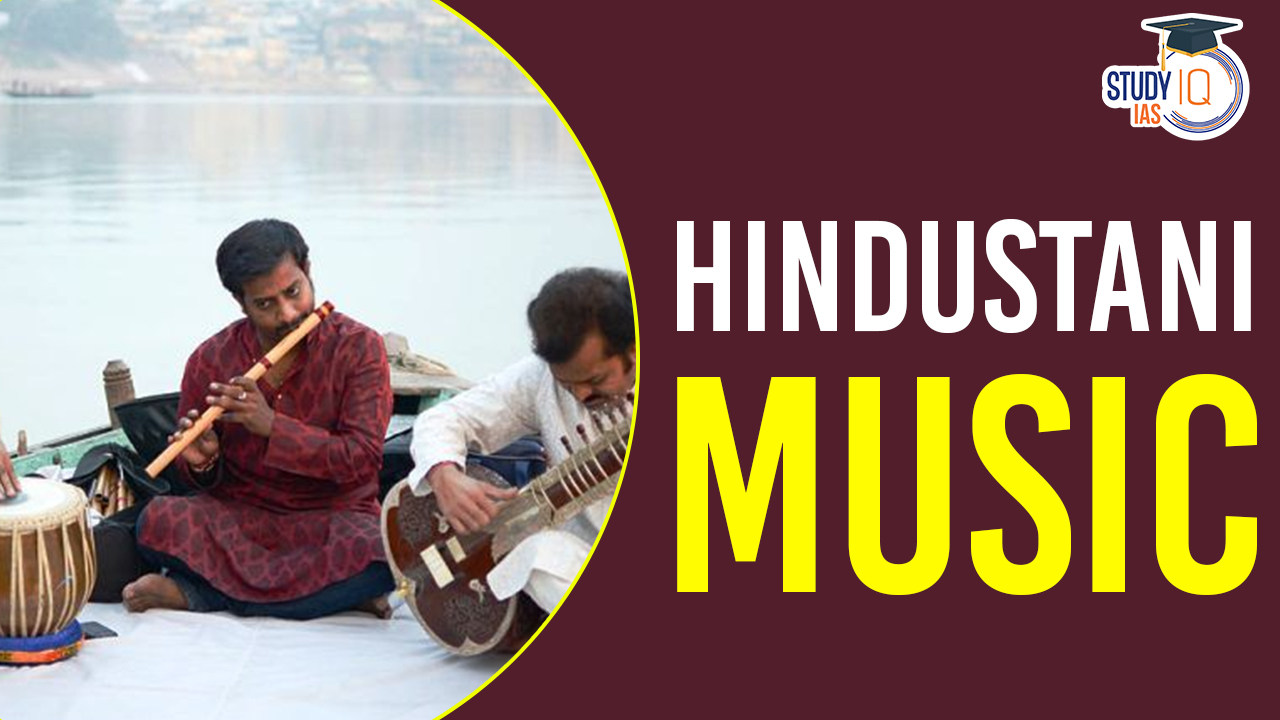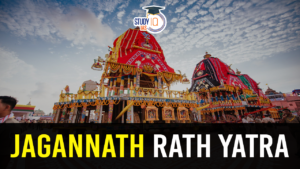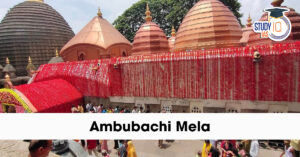Table of Contents
Hindustani music, a classical tradition of northern India, centers on ragas (melodic frameworks) and talas (rhythmic cycles). Vocalists (ragis or ustads) and instrumentalists (sursangat and talasangat) play key roles, with instruments like sitar and tabla prominent. Gharanas, distinct stylistic traditions, contribute to the genre’s diversity. Characterized by improvisation, performances evoke intricate emotions. Semi-classical forms like thumri and ghazal extend the tradition’s reach beyond classical realms, reflecting a rich and spiritual musical heritage passed down through guru-shishya (teacher-student) relationships.
We’re now on WhatsApp. Click to Join
Origin of Hindustani Music
The origin of Hindustani music can be traced to ancient India, with its roots deeply embedded in cultural, religious, and historical developments. While both Hindustani and Carnatic music share common foundational principles from Bharata’s Natyasastra, they began to diverge around the 14th century.
Hindustani music evolved in the northern regions of India and was influenced by various cultural and musical elements. The medieval period, especially during the Mughal era, played a significant role in shaping Hindustani music. The synthesis of indigenous musical traditions with Persian, Central Asian, and other regional influences led to the creation of a distinct musical form.
Key aspects of the origin and development of Hindustani music include:
- Vedic and Ancient Roots: The Vedas, ancient Hindu scriptures, contain early musical elements, and the Natyasastra provided foundational principles for both Hindustani and Carnatic music.
- Medieval Influences: During the medieval period, the Bhakti and Sufi movements, as well as interactions with Persian and Central Asian cultures, contributed to the evolution of Hindustani music.
- Mughal Patronage: The Mughal emperors, particularly Akbar, were patrons of the arts, including music. This period saw the integration of Persian and Central Asian musical elements into the existing Indian musical framework.
- Development of Gharanas: Over time, various gharanas (musical lineages) were established, each with its unique style and approach to music. The Gwalior, Agra, and Jaipur-Atrauli gharanas, among others, contributed to the diversity of Hindustani music.
- Influences and Synthesis: Hindustani music reflects a synthesis of ancient Hindu traditions, Vedic philosophy, Persian elements, and influences from Arab, Persian, and Afghan cultures. This amalgamation has added a unique and multifaceted dimension to Hindustani music.
- Guru-Shishya Parampara: The transmission of musical knowledge has been traditionally carried out through the Guru-Shishya Parampara, where students learn directly from their masters.
Overall, the origin of Hindustani music is a complex and fascinating journey that encompasses a rich tapestry of cultural, historical, and musical influences, resulting in the distinctive classical tradition that we recognize today.
Major Styles of Hindustani Music
Hindustani Classical Music is a rich and diverse tradition with historical roots in Bharata’s Natyashastra. The two main branches, Hindustani and Carnatic music, diverged around the 14th century. The Hindustani branch places a strong emphasis on musical structure and improvisation.
Dhrupad
Dhrupad, the oldest form of Hindustani vocal music, translates to “the literal rendering of verse into music.” It originated as a devotional art form and flourished during Akbar’s reign. Dhrupad typically involves a duo of male vocalists, accompanied by tanpura and pakhawaj. The four forms of Dhrupad singing are Dagar Bani, Khandaar Bani, Nauhar Bani, and Gauhar Bani, each associated with different schools or gharanas.
- Dagari Gharana: Known for a strong emphasis on alap, prominent representatives include the Gundecha Brothers.
- Darbhanga Gharana: Emphasizes both raga alap and composed songs, notable for layakari. The Mallik family is a leading exponent.
- Bettiah Gharana: Known for unique techniques within the Nauhar and Khandar vani styles. The Mishra family is a famous representative.
- Talwandi Gharana: Faces challenges due to its location in Pakistan, emphasizes the Khandar vani style.
Khayal
Khayal, meaning ‘a stray thought’ or ‘imagination,’ is a romantic style of Hindustani vocal music. It originated in the 18th century, showcasing running glides over notes (Tans) and bol-tans. Gwalior Gharana and Kirana Gharana are prominent in Khayal.
- Gwalior Gharana: Known for simplicity, equal emphasis on melody and rhythm. Exponents include Nathu Khan and Vishnu Palushkar.
- Kirana Gharana: Famous for precise tuning, expression of notes, and mastery over slow tempo ragas. Bhimsen Joshi and Gangubai Hangal are notable artists.
- Agra Gharana: Blends Khayal gayaki with Dhrupad-Dhamar style. Major exponents include Mohsin Khan Niazi and C.R. Vyas.
- Patiala Gharana: Emphasizes rhythm, ornamentation, and intricate tappa singing. Ustad Bade Ghulam Ali Khan achieved distinction in this style.
- Jaipur-Atrauli Gharana: Known for unique laykari and a rich repertoire of ragas. Founder is Ustad Alladiya Khan.
- Bhendi Bazaar Gharana: Known for breath control, uses Carnatic ragas. Founded by Chhajju Khan, Nazir Khan, and Khadim Hussain Khan.
Tarana Style
Tarana is a distinctive musical style characterized by intricate rhythms and woven syllables, performed at a brisk tempo. Its origins are attributed to the dedicated efforts of Amir Khusro. Unlike khayal bandishes, tarana relies solely on rhythmic patterns, tabla bols, and maintains a balanced tempo.
In contrast to khayal, which utilizes meaningful verbal text or bandish to elaborate on a raaga, tarana relies on rhythmically structured yet “meaningless” bols to develop a raaga. This tradition of using nonsensical syllables in music is not unique to Hindustani traditions, as a similar form known as Thillana exists in the Carnatic tradition.
Pandit Rattan Mohan Sharma of the Mewati Gharana currently holds the title of the world’s fastest tarana singer. The audience at the Pandit Motiram Sangeet Samaroh in Hyderabad bestowed upon him the esteemed title of “Tarana ke Baadshah” (King of Tarana).
Semi-Classical Style of Hindustani Music
Semi-classical music, rooted in the swara (notes), deviates slightly from the standard raga structure by incorporating lighter versions of ragas like Bhoopali or Malkaush. This genre employs a lighter version of tala and features madhyam or dhrut laya, indicating a faster tempo. The emphasis is placed on bhava (emotion) and lyrics rather than the alap-jor-jhala progression.
Thumri
Originating in the 18th century CE in the Eastern part of Uttar Pradesh, particularly in Lucknow and Benares, Thumri was developed by the renowned musician Sadiq Ali Shah. Influenced by hori, kajri, and dadra, Thumri is characterized as a romantic and erotic style, often termed “the lyric of Indian classical music.” The compositions, typically in Hindi with Braj Bhasha dialect, revolve around themes of love, separation, and devotion, particularly focusing on a girl’s love for Krishna. Thumri is associated with classical dance Kathak and has two main types: Purbi Thumri, sung in slower tempo, and Punjabi Thumri, sung in a fast and lively tempo. Gharanas of Thumri include Benaras, Lucknow, and Patiala.
Tappa Style
Tappa, credited to Shorey Mian or Ghulam Nabi of Multan, developed in the late 18th century CE from the folk songs of camel riders in North-West India. Meaning “jump” in Persian, Tappa is folklore centered around love and passion, written in Punjabi. Its beauty lies in the quick and intricate display of various note patterns, featuring an unrelenting cascade of jumpy and zig-zag taans called zamzama. Tappas are composed mainly in Thumri ragas and are known for their unpredictability. Varanasi and Gwalior are strongholds of Tappa, and notable exponents include Mian Sodi, Pandit Laxman Rao of Gwalior, and Shanno Khurana.
Dhamar-Hori Style
Similar to Dhrupad, Dhamar-Hori compositions are chiefly associated with the festival of Holi and specifically praise Lord Krishna. Sung in the dhamar tala, this music is used in festivals like Janmashthami, Ramnavami, and Holi. Hori, a type of dhrupad sung during Holi, describes the spring season and is based on the love pranks of Radha-Krishna.
Ghazal
Originating in Iran in the 10th century CE, the ghazal evolved from the Persian qasida. It is a collection of couplets (sher) with a central theme of unattainable love, often interpreted as spiritual love. The 18th and 19th centuries are considered the golden period of the ghazal, with Delhi and Lucknow as its main centers. Over time, ghazals have simplified in terms of words and phrasing, making them accessible to a broader audience. Famous figures associated with Ghazal include Muhammad Iqbal, Mirza Ghalib, and Kazi Nazrul Islam.
Bhajan
Emerging during the Bhakti movement, Bhajan is a devotional musical form that emphasizes lyrics and a melodious raga complementing the devotional theme. Sung in religious gatherings, Bhajans are accompanied by instruments like Harmonium, Tambourine, Tabla, and Dholak. Bhajans are characterized by solo renditions with medium to slow-paced melodious compositions. Renowned Bhajan singers include Anup Jalota, Anuradha Paudwal, and Manna Dey.
Chaturang
Chaturang denotes a composition of a song in four parts: Fast Khayal, Tarana, Sargam, and a “Paran” of Tabla or Pakhwaj.
Dadra
Resembling Thumri, Dadra features amorous texts and is set in dadra tala. Singers often perform a dadra following a Thumri.
Ragasagar
Ragasagar consists of different parts of musical passages in different ragas within a single composition. These compositions include 8 to 12 different ragas, and the lyrics indicate the change of ragas. The peculiarity of this style lies in the smooth transitions between musical passages and ragas.
| Style | Description | Prominent Gharanas/Exponents |
| Dhrupad | Oldest form of Hindustani vocal music – Devotional art form – Involves a duo of male vocalists, accompanied by tanpura and pakhawaj – Four forms: Dagar Bani, Khandaar Bani, Nauhar Bani, and Gauhar Bani | Dagari Gharana: Gundecha Brothers – Darbhanga Gharana: Mallik family – Bettiah Gharana: Mishra family – Talwandi Gharana: Challenges due to location in Pakistan |
| Khayal | Romantic style of Hindustani vocal music – Originated in the 18th century – Features running glides (Tans) and bol-tans – Gwalior Gharana, Kirana Gharana, Agra Gharana, Patiala Gharana, Jaipur-Atrauli Gharana, Bhendi Bazaar Gharana | Gwalior Gharana: Nathu Khan, Vishnu Palushkar – Kirana Gharana: Bhimsen Joshi, Gangubai Hangal – Agra Gharana: Mohsin Khan Niazi, C.R. Vyas – Patiala Gharana: Bade Ghulam Ali Khan – Jaipur-Atrauli Gharana: Alladiya Khan – Bhendi Bazaar Gharana: Chhajju Khan, Nazir Khan, Khadim Hussain Khan |
| Tarana Style | Characterized by intricate rhythms and woven syllables – Originated from the efforts of Amir Khusro – Relies on rhythmic patterns and tabla bols – “Meaningless” bols to develop a raaga | Pandit Rattan Mohan Sharma (Mewati Gharana) – Title: “Tarana ke Baadshah” (King of Tarana) |
| Semi-Classical | Rooted in swara (notes) – Lighter versions of ragas – Lighter tala and faster tempo – Emphasis on bhava (emotion) and lyrics | Thumri: Benaras, Lucknow, Patiala Gharanas – Tappa: Varanasi, Gwalior – Dhamar-Hori: Associated with Holi – Dadra: Resembles Thumri |
| Thumri | Romantic and erotic style – Originated in the 18th century CE – Developed by Sadiq Ali Shah – Associated with Kathak dance – Purbi Thumri (slower), Punjabi Thumri (fast and lively) | Gharanas: Benaras, Lucknow, Patiala |
| Tappa Style | Developed from folk songs of camel riders – Folklore centered around love and passion – Quick and intricate display of note patterns – Composed mainly in Thumri ragas | Notable exponents: Mian Sodi, Pandit Laxman Rao, Shanno Khurana |
| Dhamar-Hori Style | Associated with Holi festival – Praises Lord Krishna – Sung in dhamar tala – Hori, a type of dhrupad sung during Holi | Sung during festivals like Janmashthami, Ramnavami, and Holi |
| Ghazal | Originated in Iran in the 10th century CE – Central theme of unattainable love – Golden period in the 18th and 19th centuries – Simplified over time | Famous figures: Muhammad Iqbal, Mirza Ghalib, Kazi Nazrul Islam |
| Bhajan | Devotional musical form – Emphasizes lyrics and melodious raga – Accompanied by instruments like Harmonium, Tambourine, Tabla, and Dholak | Renowned singers: Anup Jalota, Anuradha Paudwal, Manna Dey |
| Chaturang | Composition in four parts: Fast Khayal, Tarana, Sargam, and a “Paran” of Tabla or Pakhwaj | Structure includes Fast Khayal, Tarana, Sargam, and “Paran” of Tabla or Pakhwaj |
| Dadra | Resembles Thumri – Features amorous texts – Set in dadra tala | Often performed following a Thumri |
| Ragasagar | Consists of different parts of musical passages in different ragas within a single composition – Smooth transitions between musical passages and ragas | Compositions include 8 to 12 different ragas, indicating the change of ragas |
Hindustani Music UPSC
Hindustani Classical Music, rooted in Bharata’s Natyashastra, comprises diverse styles. Dhrupad, the oldest vocal form, emphasizes literal rendering of verse. Khayal, a romantic style, features running glides and bol-tans. Tarana, known for intricate rhythms, relies on meaningless bols. Semi-classical genres like Thumri explore romantic and devotional themes. Tappa, rooted in folk, showcases quick and intricate note patterns. Ghazal, originating in Iran, centers on unattainable love. Bhajan, a devotional form, emphasizes lyrics and melody. The Chaturang composition includes Fast Khayal, Tarana, Sargam, and a “Paran.” Dadra, resembling Thumri, features amorous texts. Ragasagar involves smooth transitions between musical passages and ragas.


 Bonalu Festival 2025: Date, History, Rit...
Bonalu Festival 2025: Date, History, Rit...
 Puri Jagannath Rath Yatra 2025, History,...
Puri Jagannath Rath Yatra 2025, History,...
 Ambubachi Mela 2025: Dates, Rituals, Sig...
Ambubachi Mela 2025: Dates, Rituals, Sig...





















